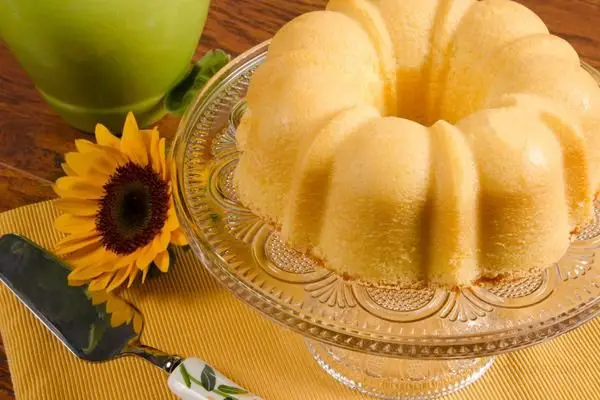Whether you’re a baking enthusiast or just someone with a sweet tooth, the mention of buttermilk cake might trigger your curiosity. But what exactly does buttermilk cake taste like?

The Role of Buttermilk in Baking
Buttermilk, a fermented dairy product, is a key ingredient in buttermilk cake recipes. It acts as a leavening agent, enhancing the cake’s rise and creating a soft, airy interior.
Beyond its structural role, buttermilk imparts a pleasant tanginess to the cake, balancing the sweetness and adding depth to the overall taste.
Taste Profile of Buttermilk Cake
Bold the Heading of the Second Table using Markdown language
Buttermilk cake offers a delightful balance of flavors. The cake’s sweetness is well-balanced by the slight tang of the buttermilk.
This unique combination creates a nuanced taste that is both comforting and intriguing. The tanginess is not overpowering but adds a refreshing twist to each bite, making it a favorite among those who enjoy nuanced flavors.
Texture and Moisture
The texture of a buttermilk cake is a true masterpiece. Its crumb is tender and delicate, contributing to a melt-in-your-mouth experience.
The buttermilk’s acidity tenderizes the gluten in the batter, resulting in a finer crumb structure. Moreover, buttermilk adds moisture to the cake, ensuring it remains soft and fresh for longer periods.
Variations in Buttermilk Cakes
Buttermilk cake enthusiasts can delight in a wide range of variations. From classic vanilla buttermilk cakes to decadent chocolate options, the possibilities are endless.
Incorporating fruits, nuts, or even spices like cinnamon can further elevate the flavor profile and provide exciting taste experiences.
Perfect Pairings with Buttermilk Cake
Pairing buttermilk cake with the right accompaniments can enhance the overall tasting experience.
The cake’s tanginess makes it an excellent companion to fruits like berries and citrus. Additionally, a dollop of freshly whipped cream or a scoop of vanilla ice cream can provide a creamy contrast to the cake’s flavors.
Baking Tips for Irresistible Buttermilk Cakes
Achieving the perfect buttermilk cake requires a few essential baking tips. Ensuring your ingredients are at room temperature, measuring accurately, and not overmixing the batter are crucial steps.
Preheating the oven, greasing the pans properly, and allowing the cakes to cool adequately after baking contribute to the cake’s texture and taste.
Exploring Buttermilk Cake Recipes
Delving into the world of buttermilk cake recipes opens up a realm of creativity. From simple, single-layer cakes to elaborate multi-layer creations, there’s a recipe to suit every baker’s skill level and taste preference. Experimenting with different flavor combinations and frostings can lead to delightful discoveries.
Buttermilk Cake vs. Traditional Cakes: A Flavorful Comparison
In a comparison between buttermilk cakes and traditional cakes, the former stands out with its distinct taste.
While traditional cakes focus primarily on sweetness, buttermilk cakes introduce an exciting contrast of flavors. The tanginess of buttermilk sets these cakes apart and offers a memorable experience for those seeking something unique.
The History of Buttermilk Cakes
The origins of buttermilk cakes date back to times when buttermilk was a byproduct of churning butter. Resourceful bakers found that this ingredient could contribute to flavorful and tender cakes.
Over time, buttermilk cakes evolved, incorporating different ingredients and techniques to become the beloved dessert we know today.
Why Buttermilk Cakes are a Must-Try
Buttermilk cakes cater to a diverse range of taste preferences. Their balanced flavor profile appeals to those who appreciate complexity in their desserts.
Whether you’re a fan of tangy flavors, a baker seeking a challenge, or simply curious about exploring new tastes, buttermilk cakes offer a delightful adventure for your taste buds.
Unleash Your Inner Baker: Making Buttermilk Cake at Home
Creating a buttermilk cake from scratch is a gratifying experience. Following a tried-and-true recipe and immersing yourself in the baking process can be incredibly rewarding.
The end result is a homemade masterpiece that not only pleases your palate but also fills your kitchen with a wonderful aroma.
Healthier Options: Buttermilk Cake Alternatives
For those conscious of their dietary choices, there are healthier alternatives available. Whole wheat flour, natural sweeteners, and reduced-fat buttermilk can be used to create a more nutritious version of the classic buttermilk cake. These alternatives retain the cake’s essence while aligning with specific dietary goals.
Catering to Dietary Restrictions: Vegan and Gluten-Free Buttermilk Cakes
Even individuals with dietary restrictions can indulge in the joy of buttermilk cakes. Vegan and gluten-free versions of these cakes utilize plant-based ingredients and alternative flours to achieve similar flavors and textures.
This inclusivity ensures that everyone can savor the delights of buttermilk cake.
FAQs
While buttermilk contributes to the unique taste and texture of the cake, you can sometimes substitute it with a mixture of milk and acid (like vinegar or lemon juice) to achieve a similar effect.
To keep your buttermilk cake fresh and moist, store it in an airtight container at room temperature for a day or two. For longer storage, refrigerate it, but bring it back to room temperature before serving for optimal flavor.
Yes, you can freeze buttermilk cake. Ensure it’s well-wrapped to prevent freezer burn. Thaw it in the fridge before consuming and bring it to room temperature for the best taste and texture.
Absolutely! Buttermilk’s tangy and moistening properties make it a versatile ingredient for various baked goods like pancakes, muffins, and biscuits.
Conclusion
In the world of desserts, buttermilk cake stands as a testament to the art of balancing flavors and textures.
Its unique tanginess, delicate crumb, and versatile nature make it a treat worth savoring. Whether enjoyed on its own or paired with complementary elements, buttermilk cake offers an experience that is both familiar and refreshingly distinct.
